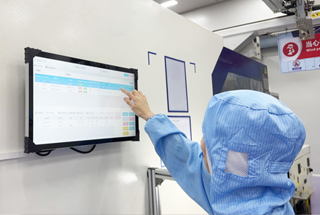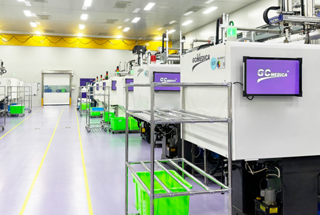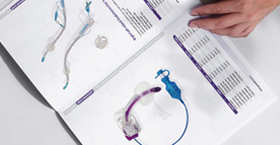Maintaining an appropriate body temperature during surgery is essential for patient safety and recovery. Hypothermia—a condition where the body temperature drops below the normal range—can occur during surgical procedures due to factors such as anesthesia, blood loss, or exposure to cold environments. It is associated with a variety of adverse outcomes, including prolonged recovery, increased risk of infection, coagulopathy (bleeding issues), and cardiovascular instability.
As a result, the use of warming devices in the operating room (OR) has become a critical aspect of surgical care. This article explores the various types of warming devices available in the operating room and provides guidance on how to choose the most appropriate system for a specific surgical scenario.
Click on the image to view details>
Understanding the Importance of Temperature Management in Surgery
Surgical procedures, particularly those that are lengthy or involve significant blood loss, can significantly impact the body's ability to regulate its own temperature. Anesthesia impairs thermoregulation by affecting the hypothalamus, and exposure to the cold environment in the operating room, as well as the administration of cold fluids or gases, can cause a significant drop in body temperature.
Even a mild drop in temperature (just 1-2°C) can lead to complications, such as:
Increased risk of infections due to impaired immune function
Prolonged bleeding due to platelet dysfunction and coagulopathy
Delayed recovery and extended hospital stays
Shivering, which increases oxygen consumption and metabolic demand
To mitigate these risks, it is critical to use appropriate warming devices in the OR to maintain the patient’s core temperature.
Types of Warming Devices for the Operating Room
There are several types of warming devices used in the operating room, each with specific applications and benefits. Understanding the options and their functionalities is key to making an informed decision.
Forced-Air Warming Systems
Can cause discomfort or overheating if not carefully monitored.
Requires space in the operating room for the system to operate effectively.
Non-invasive and easy to apply.
Effective for maintaining the patient’s body temperature throughout long surgeries.
Can warm both the core and extremities.
Description: Forced-air warming systems are the most commonly used in the operating room. They work by blowing warm air through an inflatable blanket or gown that covers the patient.
Benefits:
Considerations:
Popular Examples: Bair Hugger™ Warming System,ThermaAir™ Patient Warming System.
Fluid Warming Systems
Limited to applications where fluids are involved.
Some systems may have limited warming capacity or slow response times.
Essential for preventing hypothermia when large amounts of fluid are being administered.
Particularly useful in major surgeries involving significant blood loss.
Description: Fluid warmers are used to heat intravenous fluids (IVF), blood, or irrigation fluids before they are infused into the patient’s body.
Benefits:
Considerations:
Popular Examples: Level 1® Fluid Warmer, Belmont™ Rapid Infuser.
Conductive Warming Systems
May not be as effective as forced-air systems for long-duration surgeries.
Limited to applications where the patient is in a stable position and not moving frequently.
Can be used for both full-body and localized warming.
Compact and easy to integrate into the OR setup.
Description: These systems include heated blankets or mattresses that use direct contact to transfer heat to the patient.
Benefits:
Considerations:
Popular Examples: WarmTouch™ Warming System.
Requires careful monitoring to avoid burns or overheating.
Typically used for smaller areas of the body.
Lightweight and portable.
Provides targeted warmth and is ideal for localized areas.
Description: Resistive heating systems use electrical heating elements embedded in blankets or pads to provide direct heat to the patient.
Benefits:
Considerations:
Popular Examples: Thermal Blankets, ThermoGuard™.
Resistive Heating Systems
Circulating Water Warming Systems
Can be bulky and require additional space.
May require regular maintenance to avoid leaks or system failure.
Provides even heat distribution across the body.
Effective for maintaining temperature during both short and long procedures.
Description: These devices circulate heated water through blankets or pads to provide consistent temperature control.
Benefits:
Considerations:
Popular Examples: ThermalCare™ Warming Systems.
How to Choose the Right Warming Device
Choosing the right warming device for an operating room depends on several factors, including the type of surgery, the patient’s condition, and the desired outcome. Here are some key considerations when making your selection:
Surgical Procedure Type:
Length of Surgery: Long surgeries with extensive anesthesia use require systems that can maintain warmth over extended periods, such as forced-air warming systems.
Blood Loss: Major surgeries involving significant blood loss may necessitate the use of fluid warming systems to prevent the patient from cooling due to the infusion of cold fluids.
Targeted Warming: If only certain areas of the body need to be warmed (e.g., in orthopedic surgeries), a conductive or resistive heating system may be more suitable.
Patient Considerations:
Age and Size of the Patient: Neonates, infants, and elderly patients may have different thermal regulation needs. Smaller patients may benefit from more localized warming systems, while larger or adult patients may require full-body systems like forced-air or circulating water systems.
Co-morbidities: Patients with cardiovascular issues or those undergoing heart surgery may require specific systems that can regulate temperature more precisely and avoid overheating.
Ease of Use:
Operator Experience: Some warming systems, such as forced-air devices, are easy to use and require minimal training, while others, such as fluid warmers, may require more technical expertise.
Setup and Portability: Consider how much space is available in the operating room, as well as how easy it is to set up and use the device. Some systems are bulky and take up significant space, while others are portable and compact.
Cost and Maintenance:
Initial Cost vs. Ongoing Maintenance: Some warming devices, like forced-air warming systems, may have higher upfront costs but are easy to maintain, while others, like fluid warmers or circulating water systems, may require more frequent maintenance and calibration.
Safety Features:
Monitoring: Choose devices that have built-in safety features, such as temperature sensors, alarms, and automatic shutoff mechanisms to prevent overheating or skin burns.
Comfort and Compliance: It’s essential that the warming system does not cause discomfort or pressure points for the patient. Comfort is particularly important in longer surgeries.
Conclusion
Maintaining proper body temperature in the operating room is crucial for patient safety and optimal surgical outcomes. The choice of warming device should be based on factors like the type and duration of the surgery, the patient's medical condition, and the available space and resources in the operating room.
Ultimately, the right warming system can help prevent hypothermia, reduce the risk of complications, and improve patient recovery. By understanding the various types of warming devices and how they function, healthcare providers can make more informed decisions and ensure the best care for their patients during surgery.


 Français
Français Español
Español Products
Products

 About Us
About Us












